If you want a fast, tasty meat that works as well for a weeknight meal as it does for an impressive weekend gathering, look no further than pork tenderloin. Pork tenderloin is very tender and juicy when cooked properly, but there are a couple of challenges that make it easily prone to overcooking. Keep reading and learn how to cook up the juiciest pork tenderloin ever, and get a recipe inspired by Jess Pryles for an apple-cider brined smoked pork tenderloin!
Contents:
- What is pork tenderloin?
- Pork tenderloin basics
- Temperatures for pork tenderloin
- Smoked pork tenderloin recipe
What is pork tenderloin?
Tenderloin is the pork equivalent of (you may have guessed this) the tenderloin of beef. That’s the cut that gives us the chateaubriand as well as filet mignon steaks, known in anatomical terms as the psoas major. Like the beef tenderloin, this muscle is little used in the hog, and so grows tender. It has a distinct lack of connective tissue throughout the muscle and also has very little fat marbling. The lack of connective tissue makes it easy and fast to cook, as you don’t need to let it cook for a long time to allow the collagen that inhabits so many other cuts to dissolve.
Pork loin vs pork tenderloin
You should know, though, that pork tenderloin and pork loin are not the different names for the same thing. The loin is the longissimus dorsi, the muscle that is equivalent to the strip steak and part of the ribeye. It rides above the rib cage, while the tenderloin is tucked just below it next to the spine, and has a much larger diameter and length than does the tenderloin. A whole loin can be a few feet long, while a tenderloin is usually about 10-12″.
So what does that mean for you? in some ways not much. They’re both tender, they’re both lean, they both present some cooking challenges. But the tenderness of the tenderloin does exceed that of the loin, and because of its smaller diameter, it is also a faster meat to cook.
Pork Tenderloin Challenges
As noted above, pork tenderloin is very lean—much like a chicken breast. Fat contributes to the feeling of juiciness in cooked meat, as well as contributing greatly to flavor. Lean meats easily become very dry when overcooked by even a couple of degrees.
Aside from the challenges presented by the leanness of the meat, there is another consideration that we must examine: shape.
Pork tenderloin is an unevenly-shaped cut of meat. Thick at one end and tapered at the other—just like a beef tenderloin. Left as-is, this cut will be dry and overcooked at the tapered end by the time the thicker end reaches its pull temperature.
Pork tenderloin solutions, pork tenderloin temperatures
Leanness
To prevent the lean tenderloin from drying out, track its internal temperature as you cook. This is critical to avoiding dry, unpleasant pork, and we recommend monitoring your pork temperature carefully with a SmokeTM (or other) leave-in probe thermometer. For food safety, pork needs to reach a temperature of 145°F (63°C), but you shouldn’t leave it on the heat for even a degree more than that.
As for the leanness/flavor problem, just be sure to properly season your pork. In the case of this recipe, we’ll soak it in an apple cider brine and rub it with BBQ rub, then douse it with a buttery sauce. Of course, you don’t have to go that far. Salt and pepper do fine, and allow you to taste the meat more directly. If you’ve gone to the trouble of sourcing really high quality pork, don’t overdress it.
Uneven shape
The problem of pork tenderloin’s uneven shape can be solved in either of two ways.
In our Baked Chicken post, we pounded unevenly-shaped chicken breasts to a uniform thickness to encourage quick and even cooking. A similar approach can be taken with pork tenderloin, with the added step of butterflying the cut first.
- Butterfly the pork tenderloin by slicing the meat nearly in half laterally and open it like a book.

- Place the pork into a zipper-lock bag or between two sheets of plastic wrap. Pound to an even thickness with a meat pounder.

This preparation works very well for quick, high-heat methods of cooking such as broiling and grilling. You can cook it on a 500°F (260°C) grill in just a few minutes, and it’s delicious. In a high-heat scenario like that, check the temperature of the meat frequently with a Thermapen®
The other way to handle the uneven shape is to simply tie the tapered tail end underneath the rest of the roast. Simply fold an inch or so of the taper under the rest of the loin and tie it with some butcher’s twine. If you have a real butcher in your area, they should be happy to do this for you. By tying this thin bit under, you create a mostly uniform thickness throughout the length of the cut, which is a good thermal space to work in. All the temperature gradients along the roast should be even, meaning your tenderloin will cook to the same degree of doneness all the way down the cut. This method will work for high heat applications like grilling or broiling but really lends itself better to smoking or roasting applications. In the recipe below, we tie the roast and then smoke it—monitoring with our Smoke thermometer—creating tender, evenly cooked medallions of pork.
Sauce for pork tenderloin
You can use whatever sauce you like for pork tenderloin, but in this case, we decided to play off the apple flavors of the original recipe and go a step further into the arena of “nice weekend dinner,” a BBQ-themed Beurre Blanc sauce (pronounced burr-blahnk). This is a sauce that is interesting from a temperature standpoint. To make a beurre blanc, minced shallots are cooked in white wine until almost all the liquid has evaporated (the term here is au sec), then it is removed from heat and chunks of cold butter are whisked in. The butter melts but, if done correctly, doesn’t break its emulsion. This gives you a pourable, spoonable, basteable sauce that is basically liquid-solid butter. In this case, because we have apple cider in the brine, we used hard cider instead of white wine and we added some finely diced apple with the shallot and used BBQ rub for the salt. We basted the result onto the hot pork tenderloins which caused it to melt in the photos, but more would be passed at the table for serving. High-class meets BBQ!
Apple Cider Brined Smoked Pork Tenderloin Recipe with BBQ Beurre Blanc Sauce
Recipe based on Jess Pryles’ recipe.
Ingredients
For the pork
- One pork tenderloin, about 1.5 lb (they usually come in packages of two)
- 1 1/2 C apple cider (the juice kind, not hard cider)
- 1 C water
- 1 Tbsp salt
- 2 Tbsp sugar
- 2 tsp ground cardamom (optional)
- 2 tsp whole peppercorns (or ground pepper if you only have that on hand)
- 1-2 Tbsp pork rub
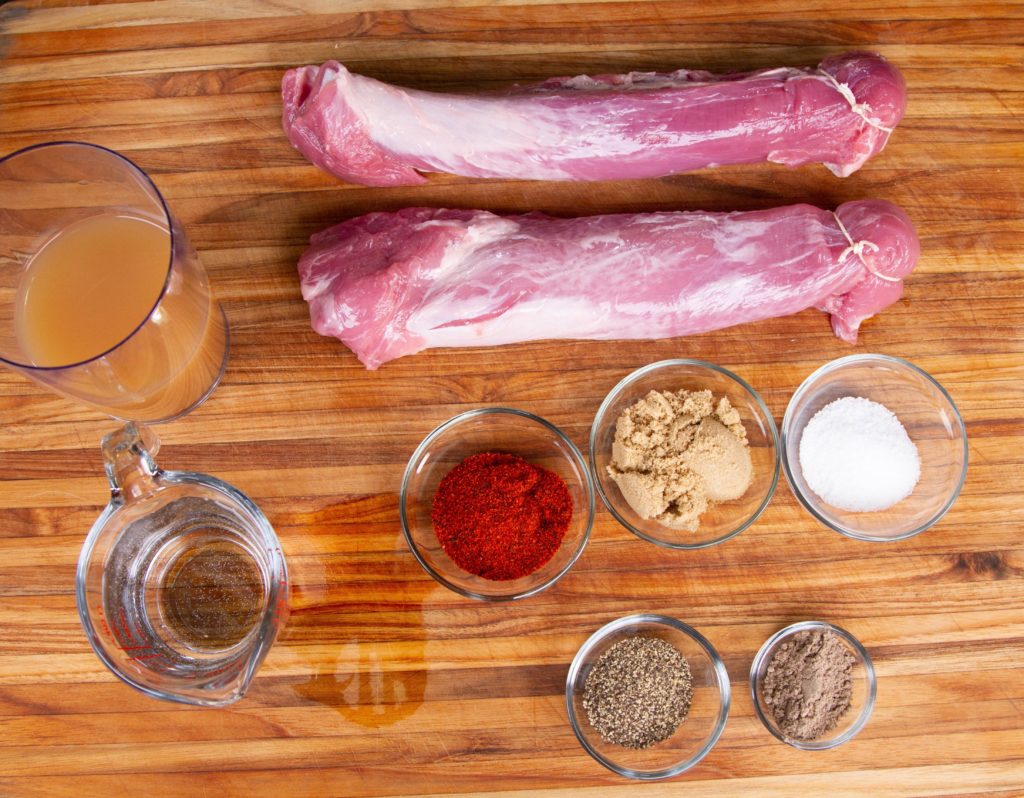
For the sauce
- 1 C Hard cider
- 1 shallot, minced
- 1/2 Granny Smith apple, peeled and minced
- 1/2 lb (2 sticks) unsalted butter, chilled and cut into chunks
- about 2 tsp BBQ rub
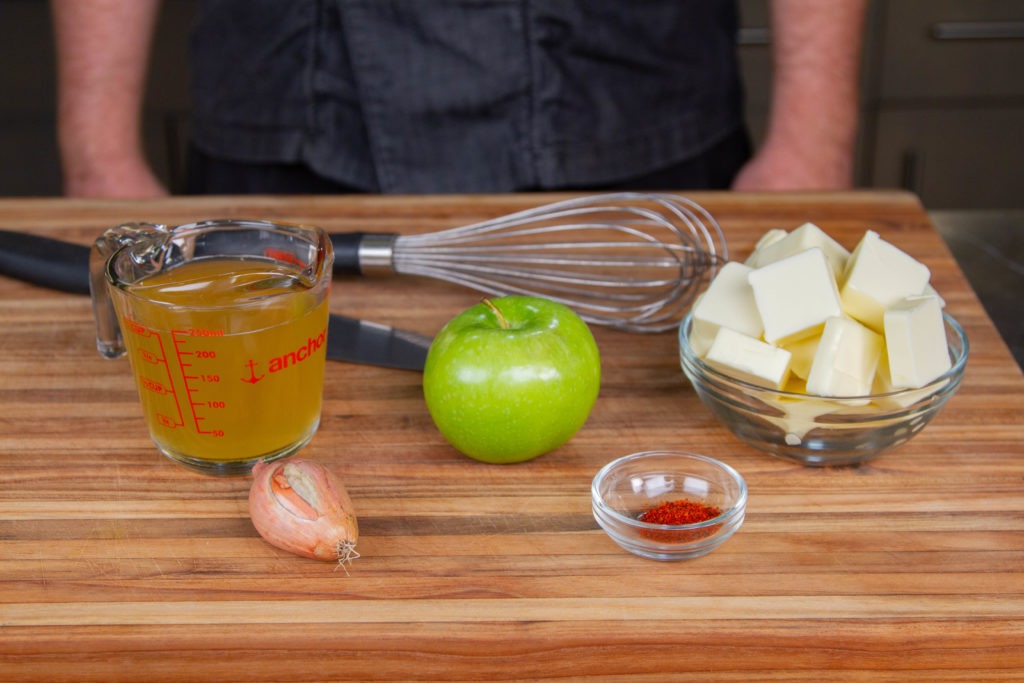
Instructions
- Prepare and smoke the meat
- Make brine
- Trim the tenderloins of excess fat, if any, and silverskin.
- Tie the tail end under the rest of the tenderloin.
- Place the tenderloins and the brine in a large zip-top bag and refrigerate for 1–1 1/2 hours.

- Heat your smoker to 250°F (121°C) with the wood of your choice. Apple is great for this apple-laden dish.
- Remove the tenderloins from the brine, pat dry, and season with the BBQ rub.

- Insert a Pro-series® probe into the very center of the loin and set your Smoke’s high alarm for 145°F (63°C).
- Smoke the tenderloin, monitoring the smoker temperature with the Smoke’s other input channel. (Set the high alarm for 275°F [135°C] and the low alarm for 225°F [107].)
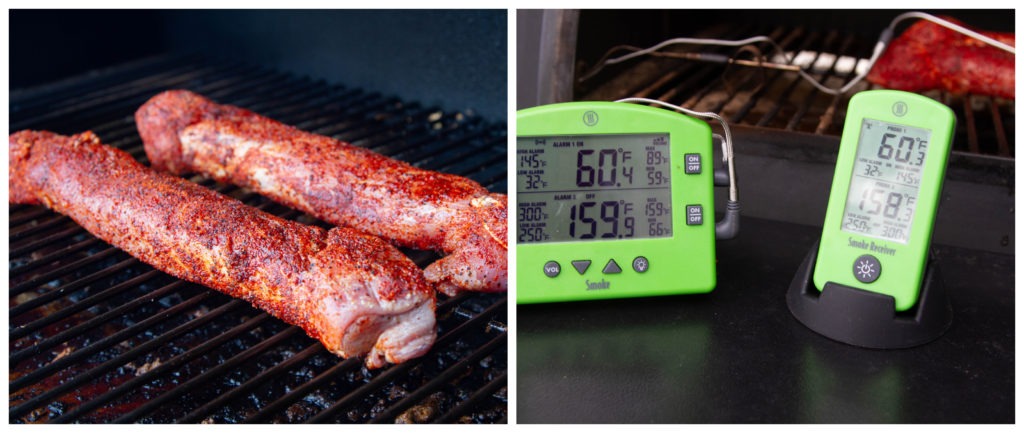
- When the high alarm on the meat sounds, verify the temperature with your Thermapen.
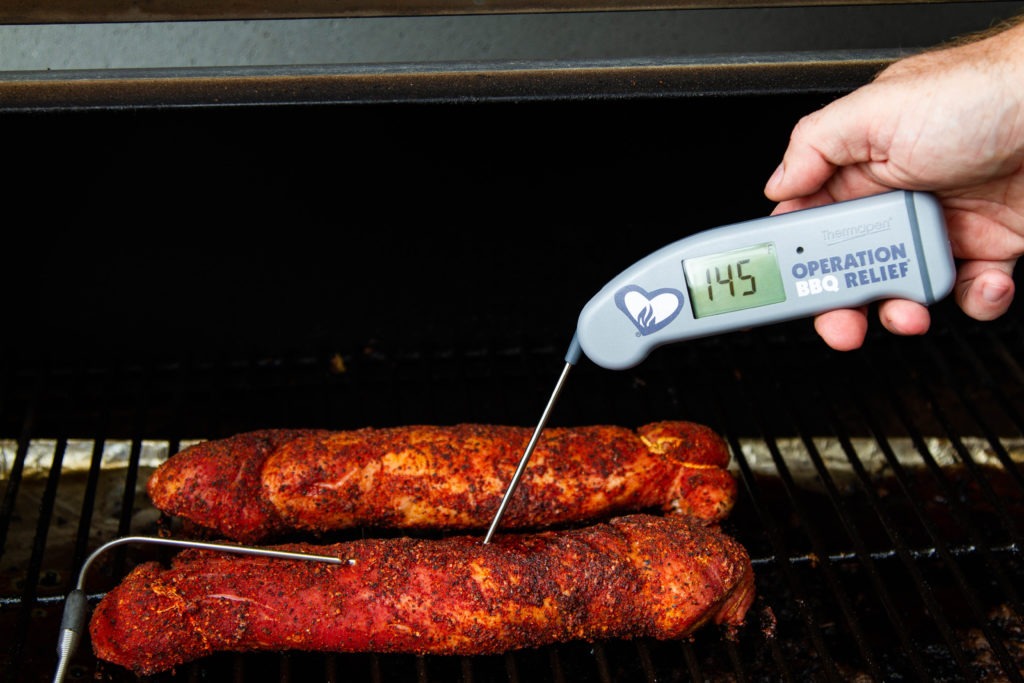
- Remove the meat from heat, cover with foil to allow to rest, and make your sauce.
- Make beurre blanc
- To a wide pan, add minced shallot and apple, hard cider, and 1 1/2 tsp of the BBQ rub.

- Bring to a boil over medium-high heat.
- Allow almost all the liquid to boil out. What is left should be syrupy.
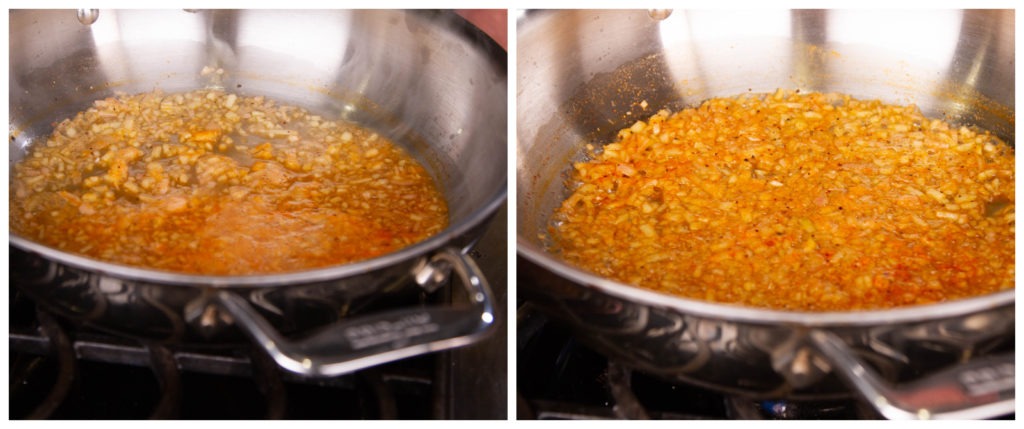
- remove the pan from heat and start whisking in the butter, a few pieces at a time. This will take a while, as the sauce will cool as you add more butter to it.
- The sauce should thicken and resemble thick cream in consistency, or even something like thin mayonnaise. To go extra fancy, strain the sauce to remove the chunks. But this is still BBQ, so maybe leave them in. Also, the apple chunks are particularly delicious.
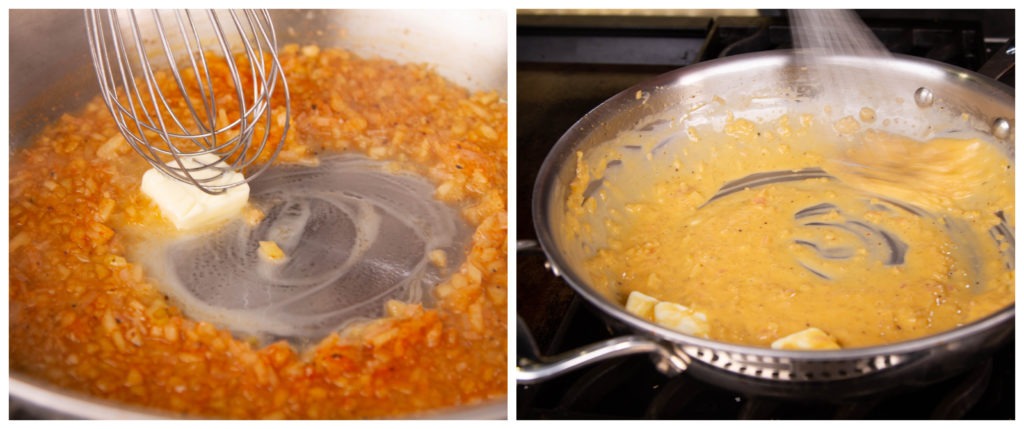
- Taste for salt and add more BBQ rub if more salt is needed.
- To a wide pan, add minced shallot and apple, hard cider, and 1 1/2 tsp of the BBQ rub.
- Serve
By evening out the thickness of the oddly shaped tenderloin and by taking into account its lack of fat and connective tissue, you can make pork tenderloin that is truly different from all the dry, overcooked pork of your past—it is almost unrecognizable as the same meat that gets so dry and tough. This almost silky-textured meat is an amazing treat, and easy to achieve with proper temperature management thanks to the Smoke and the Thermapen. So remember: cook that pork to 145°F (63°C) and not a degree more!
Shop now for products used in this post:
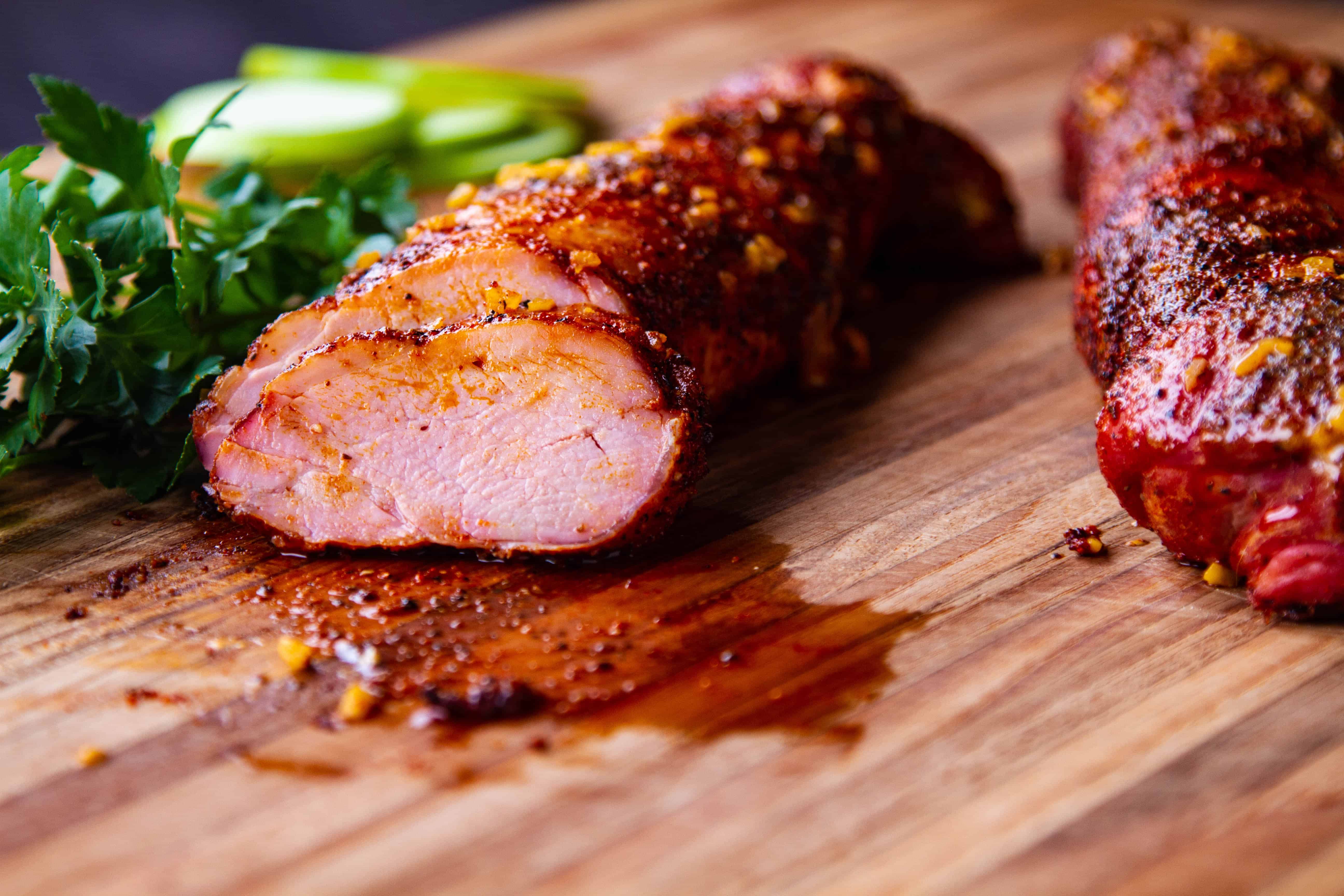
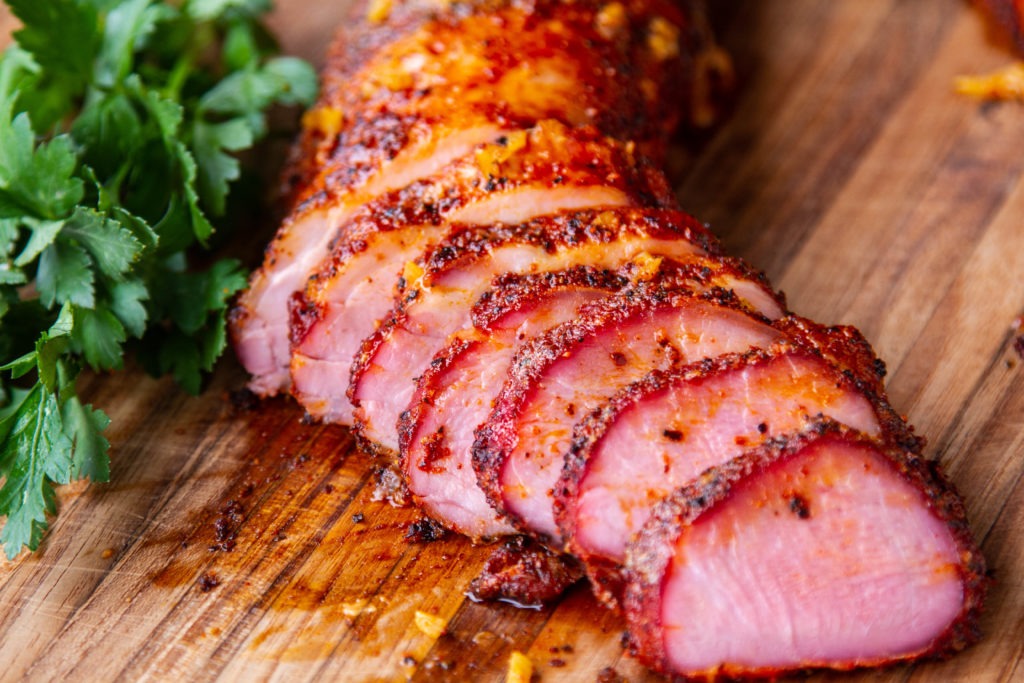


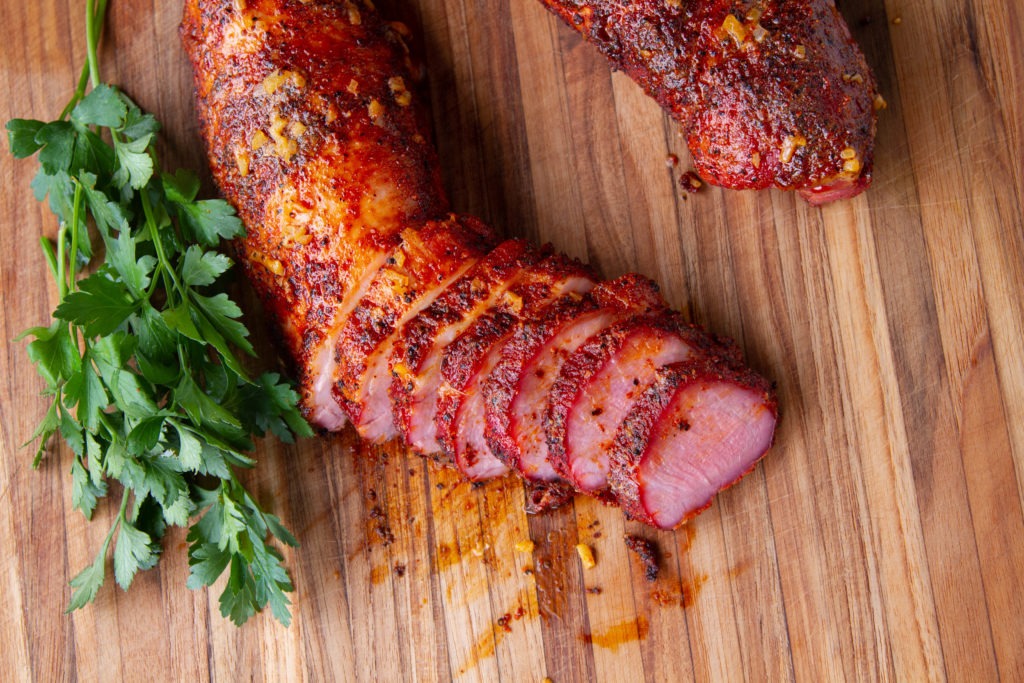



George B says
Have had great results with the 7-6-5 minute method. No need to butterfly or tie. Just marinade 12-24 hours, heat well oiled grill to medium high 450-500, sear one side for 7 minutes, turn over sear for 6 minutes, turn off the burners leave for another 5 minute, DONE. Temperature will be 140-145, rest for 10 and enjoy perfect medium done.
CaptTurbo says
Seems like a lot of trouble to go through. I have perfect pork tenderloins every time just using olive oil, garlic powder, Everglades Seasoning, and some cayenne dust for a rub. Then I run them low and slow in my KBQ C -60 at about 225*. I always use a water pan for them and reverse their position on the cooking grid half way through the cook for even heating.
I have been very much enjoying my new ThermoWorks ‘Smoke’ cooking probe! Thanks for another great product! The only trouble it wants to give me is that the probes can be hard to keep plugged in for full contact.
tim says
Glad you’re having success with the Smoke. The Smoke probes should hold snuggly in the base unit. If you’re having connectivity problems you may want to contact Amanda at techsupport@thermoworks.com. There’s a 2-year warranty on the Smoke and 6-month warranties on the probes.
Kathy says
This recipe sound like it would be delicious. But I’m confused about one point. In listing the ingredients you specify apple cider, not hard cider. Then in the instruction you reference hard cider. This is confusing.
Martin says
Either will work! I meant hard cider, but juice-cider will do fine, too.
Marilyn says
This looks delicious! I don’t eat sugar, so the apple cider or apple juice will be a problem for me. I can use sugar substitutes, however. Do you have a suggestion for a substitute? What would happen to the meat if I used apple cider vinegar and a sweetener? Will the acid be a problem?
Martin says
You can use anything you like that will taste good! Cider vinegar is a great choice.